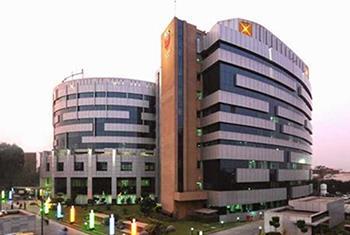Laryngeal Cancer Treatment in India
Laryngeal cancer treatment entails:
Radiation therapy: To destroy cancer cells, radiation oncologists use high-energy radiation beams. To reduce harm to nearby healthy tissue, the radiation only targets the tumour.
Chemotherapy: Drugs are used by medical oncologists to either destroy or inhibit the growth of cancer cells. Chemotherapy is frequently administered intravenously (via a vein). An oncologist can assist you in managing the side effects of chemotherapy.
Immunotherapy: This treatment helps fight cancer by utilizing your body’s natural defences, the immune system. Biologic therapy is another name for immunotherapy.
Targeted therapy: This medical intervention uses particular protein types to target cancer cells and stop them from proliferating.
Surgery: surgery can remove a tumour from early-stage laryngeal cancer while protecting your larynx and swallowing and speaking abilities. Surgeons frequently have to perform a laryngectomy, or removal of the entire larynx, in cases of advanced cancer.
- There could be multiple treatments available and apt. For instance, following surgery, patients may receive radiation therapy or chemotherapy to eradicate any cancer cells that may still be present.
Surgery Procedures Available
There are procedures for laryngeal surgery available.
Surgery is used to remove cancer. The aim of surgery for laryngeal cancer is to remove the tumour while maintaining the function of your larynx. The larynx may need to be removed entirely or in part by the surgeon. Surgical techniques consist of:
Cordectomy: A cordectomy involves cutting off all or a portion of the vocal cord, usually via the mouth.
Supraglottic laryngectomy: A supraglottic laryngectomy involves taking out the supraglottic, or upper part of the larynx, through the mouth or neck.
Hemi laryngectomy: A hemi laryngectomy preserves your voice by removing half of your larynx.
Partial laryngectomy: A partial laryngectomy preserves your voice by removing a portion of your larynx.
Total laryngectomy: A total laryngectomy involves removing your larynx from your neck as a whole.
Thyroidectomy: Thyroid gland removal, either whole or in part.
Laser surgery: Using a laser beam, a tumour can be removed without using any blood during laser surgery.







